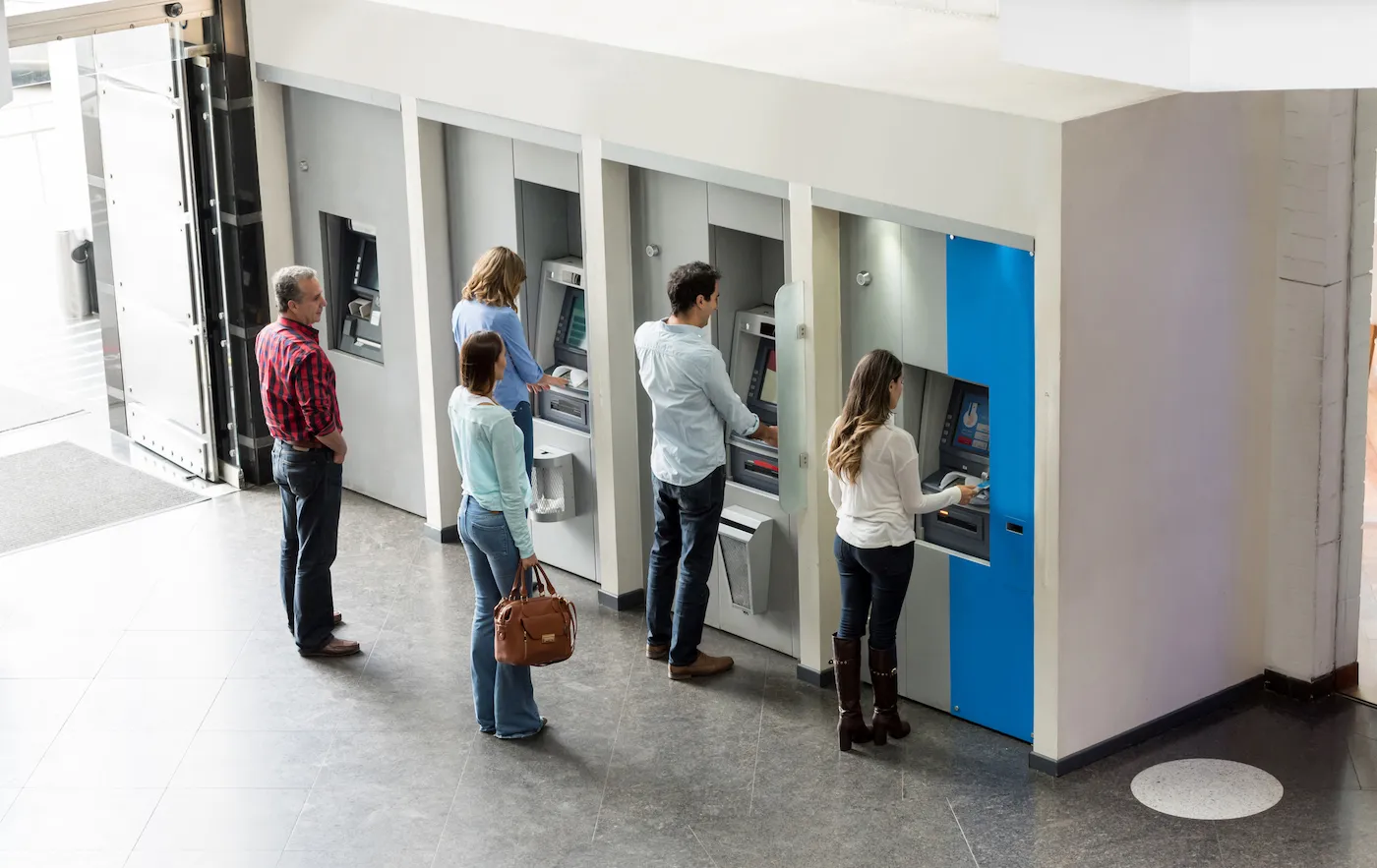How to Use an ATM
Quick Answer
Automatic teller machines (ATMs) offer a quick and easy way to withdraw and deposit money 24 hours a day, wherever an ATM is located. But take precautions to ensure a safe transaction.

The first automatic teller machine (ATM) debuted in 1967 in London and reached widespread use by the 1980s. The rise of ATMs marked the end of an era when you had to go inside a bank and speak with a teller to withdraw cash from your account.
These days, ATMs are a common convenience, allowing you to withdraw or deposit money without stepping foot into a bank during business hours. Here's how to use an ATM so you can bank at any hour, wherever you are.
How to Deposit Cash at an ATM
The process of depositing money in an ATM varies from bank to bank, but it's usually pretty straightforward and includes the following steps.
- Confirm the bank allows cash deposits since many banks don't allow you to deposit cash at an ATM that's out of their network.
- Access your account by inserting or tapping your debit or ATM card and entering your personal identification number (PIN), which is the security code you set up with your bank. Make sure your card's magnetic strip aligns with the icon on the machine.
- Choose "deposit" from the menu options and select the desired account that will receive your cash.
- Insert your bills into the deposit slot and follow the prompts on the screen. Some older machines may require you to deposit your bills in an envelope.
- Once the ATM calculates and displays your deposit amount for your approval, confirm the amount to initiate the deposit.
- Retrieve your receipt and debit or credit card from the ATM.
Depositing checks into an ATM is essentially the same as depositing cash, except you must insert checks into the machine's check slot rather than the cash slot. Also, don't forget to sign the back of the check and write "For deposit only" as an added security measure.
Be aware that banks often limit the number of bills—but not the amount—you can deposit at an ATM. For example, if your bank limits you to 40 bills per transaction, your deposit amount could range from $40 to $4,000, depending on the denomination of the bills you deposit.
How to Withdraw Cash at an ATM
ATMs provide fast access to cash when you need it by taking a few easy steps:
- Insert your ATM, debit or credit card into the machine and enter your PIN to confirm your identity.
- If you have multiple accounts linked to your card, the ATM will ask you to choose between them. Select the account you want to withdraw money from.
- Specify the amount you want to withdraw. Some machines allow you to choose the denominations you receive, such as $5, $10, $20 and $100 bills.
- Review the withdrawal details on the screen and confirm if they are correct.
- Remove your card from the ATM, collect your cash and take your transaction receipt.
Remember, the process of making an ATM cash withdrawal can vary from one machine to another, but the steps are generally the same. If you're using an out-of-network ATM, you'll likely need to agree to pay an ATM fee to complete the transaction.
How to Check Your Balance at an ATM
The steps to check your balance are similar to other ATM transactions and can be completed very quickly.
- Insert your debit or ATM card into the card slot.
- Enter your PIN when prompted by the screen.
- From the menu options, select "balance inquiry" or "check balance."
- Choose the account you want to access.
- View your account balance displayed on the ATM screen. Typically, you can also print a receipt with your balance and take it with you.
- Remember to remove your card from the machine and visually confirm the ATM session has ended for security reasons.
For added security, use ATMs in well-lit public areas. In particular, ATMs inside banks or grocery stores are often safer than outdoor ATMs. Always shield the ATM keypad with your hand when entering your PIN to prevent someone from seeing your code.
It's also a good idea to quickly inspect the ATM for tampering before using it. Look for unusual markings or devices attached to the card slot, which could be signs of a card skimming scheme to steal your information.
FAQS
Got questions about using an ATM? Here are the answers to some of the most commonly asked questions about ATMs.
Keep Tabs on Your Credit
Checking your bank account for ATM fees is an important part of maintaining your financial health. Keeping track of these fees can help you plan your ATM use, minimize extra costs and manage your money more effectively.
It's also important to keep track of your credit health by signing up for free credit monitoring from Experian. You'll be informed of changes in your credit report and receive real-time alerts of new inquiries, suspicious activity and more. And if you're working on your credit score, Experian's FICO® Score☉ tracker can help you visualize your progress and be informed when your score changes.
Earn more with a high-yield savings account
Make your money work harder with a high-yield savings account—earn higher returns with easy access to your funds.
Compare accountsAbout the author
Tim Maxwell is a former television news journalist turned personal finance writer and credit card expert with over two decades of media experience. His work has been published in Bankrate, Fox Business, Washington Post, USA Today, The Balance, MarketWatch and others. He is also the founder of the personal finance website Incomist.
Read more from Tim